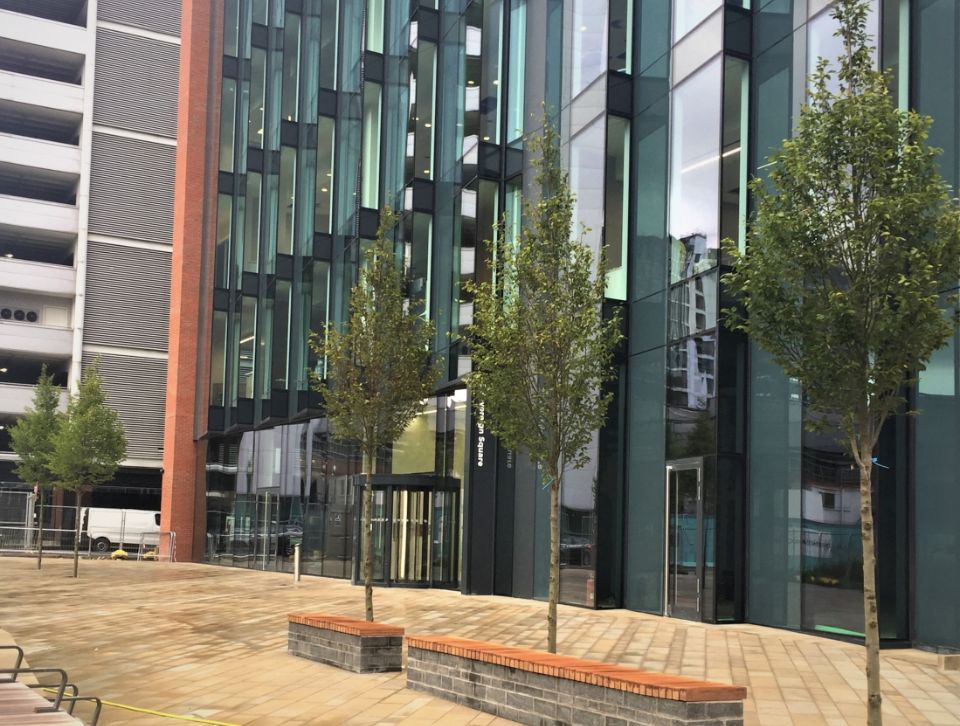Phibbs transit center gets a $30 million green facelift with Silva Cells providing LID stormwater management
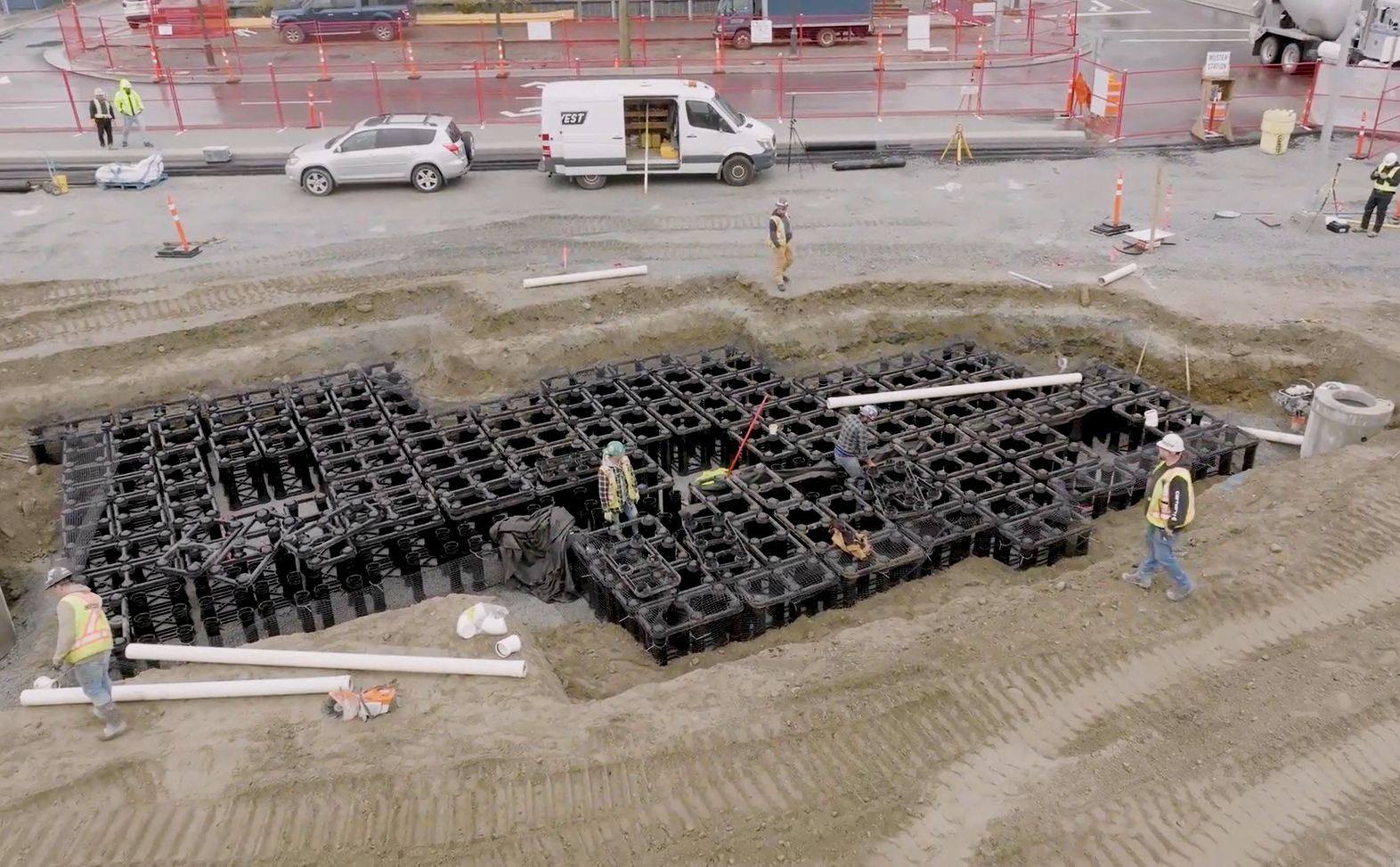
One of the busiest public transit hubs in North Vancouver, Phibbs Exchange underwent its first major upgrade initiative in its fifty-year existence in 2023. Connectivity and sustainability were among the top priorities of the project from the outset, creating a better and more welcoming commuter experience while simultaneously incorporating green features to help treat on-site stormwater. Original plans drawn up by municipal officials and the design team at PFS called for “daylighted” bioretention facilities — raingardens — to slow and clean area runoff; however, space and accessibility concerns called for a shift in strategy. Instead, many of the proposed raingardens were replaced with Silva Cells: a system that simultaneously provides soil-volume benefits to the station’s 17 new trees and manages stormwater on location — an LID solution that adheres to green principles without sacrificing buildable real estate.
Number of Silva Cells: 208 (2x) / 254 (3x)
Number of Trees: 17
Soil Volume per Tree: 23 m3
Type of Project: Public Transit Plaza, Stormwater
Project Designer: Phillips Farevaag Smallenberg (PFS)
Project Contractor: Conwest Contracting
Installation Date of Silva Cells: Summer-Fall 2023
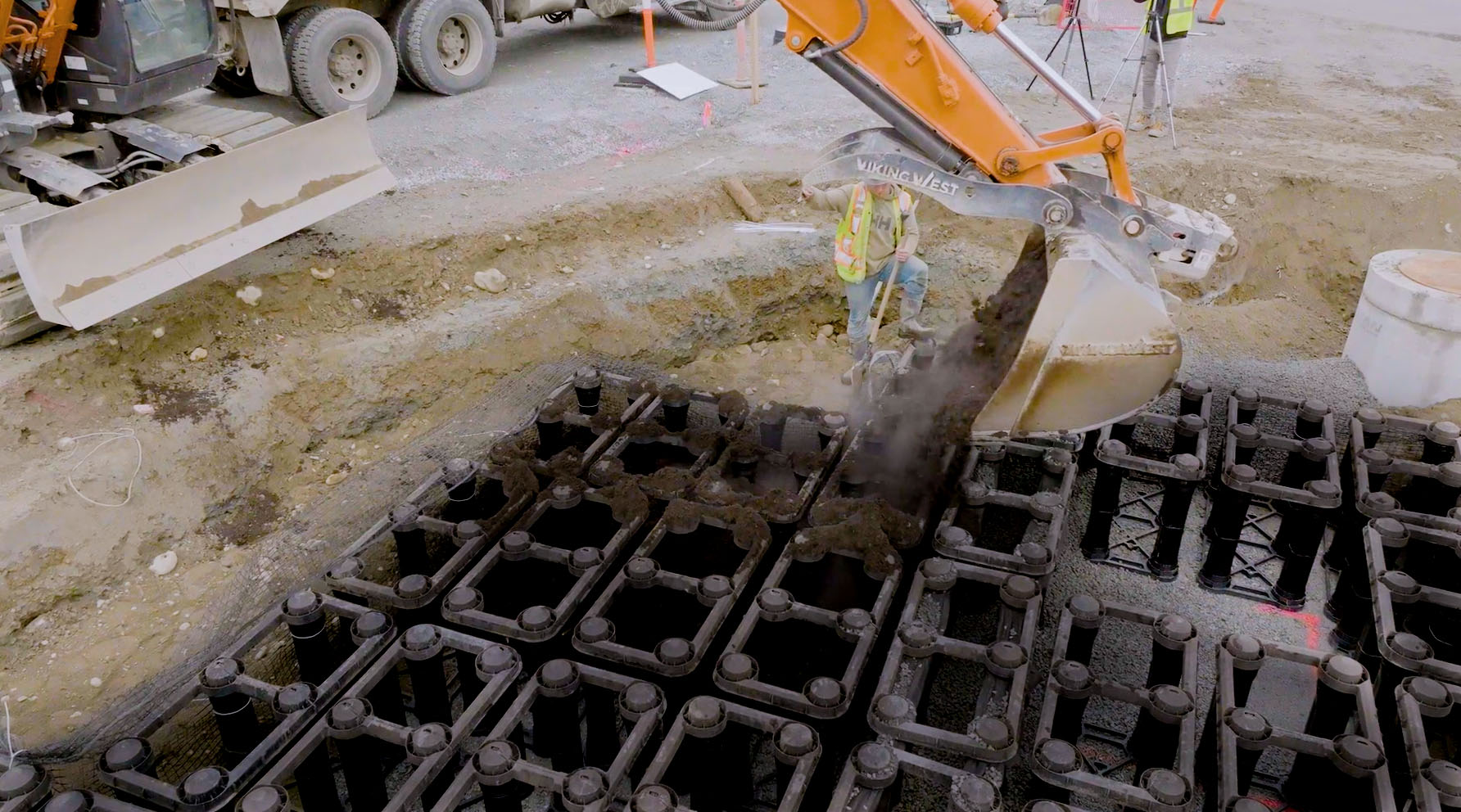
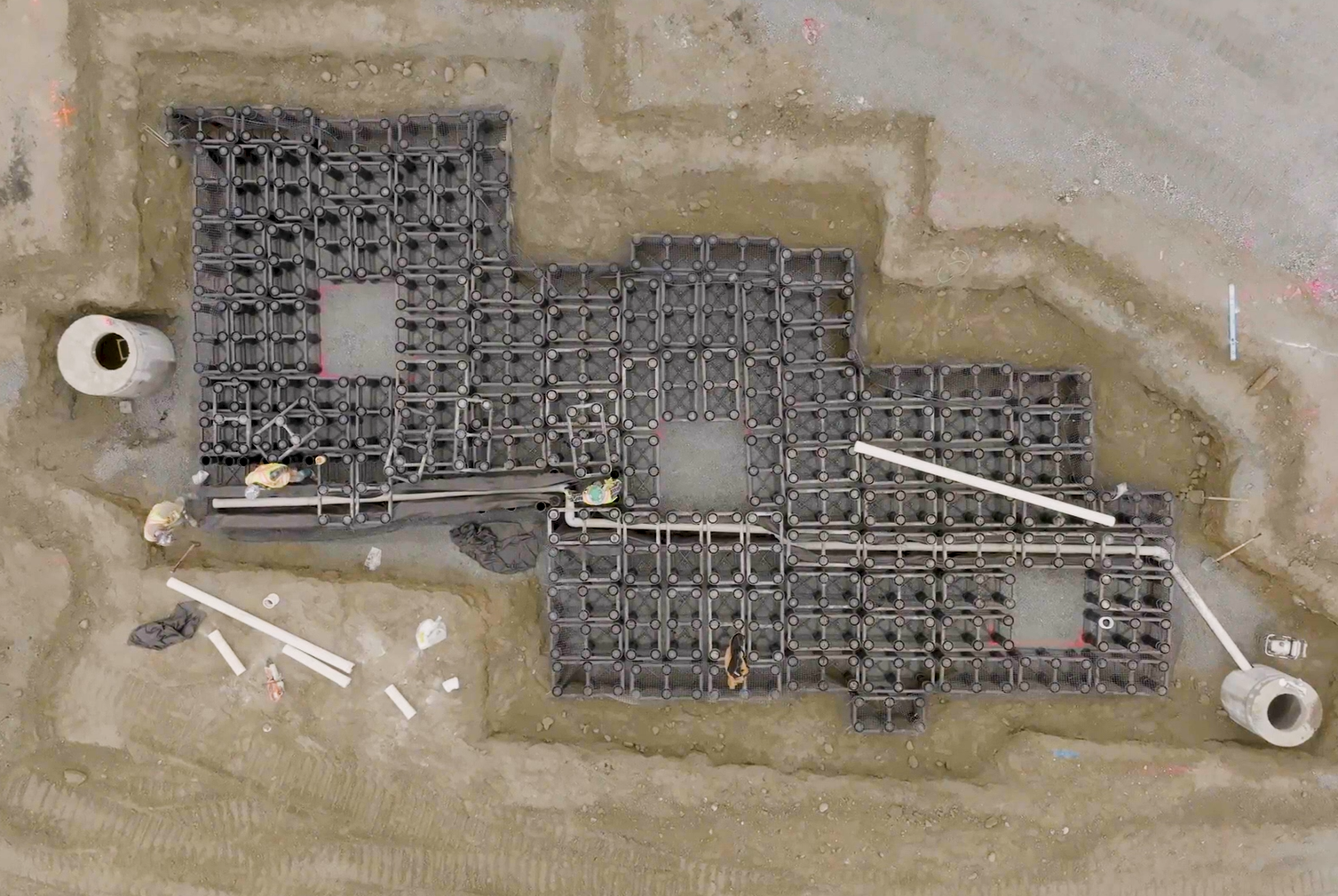
Serving the North Vancouver community since 1973, the Phibbs Exchange bus transit center is one of four major exchange locations in the North Shore area. More than 16,000 commuters pass through Phibbs Exchange every day — and, after nearly five decades with only minor upgrades, it was becoming clear that a major improvement initiative was required.
“We’ve heard from a lot of people that Phibbs Exchange is just terrible from a user perspective. It’s clear that the demand on Phibbs Exchange has outgrown what it can actually provide,” observes Bowinn Ma, North Vancouver minister of state for infrastructure.
In addition to providing more physical space for buses and passengers (growing in total size by approximately 50 percent), the new Phibbs Exchange likewise sought to improve the experience for all commuters passing through the station. The newly designed exchange, which broke ground in late 2022, includes 12 bus bays with glass shelters, improved lighting, a comfort station for bus drivers, and commercial retail space. There is also a multi-use path on the station’s south side, offering improved connectivity for both passengers and bicyclists. Ma notes that commuters “will find a [new] Phibbs Exchange that is much more friendly and welcoming for transit users.”
Upgraded (and functional) landscaping was also a top priority of city officials, who tasked Phillips Farevaag Smallenberg (PFS) with re-envisioning the Phibbs Exchange layout and its incorporated green features. Managing stormwater on location was a necessity, and the original design plans called for “daylighted” raingardens to be woven into the bus stops’ landscaping — but this strategy quickly proved prohibitive, leading project planners to a more versatile solution: the DeepRoot Silva Cells.
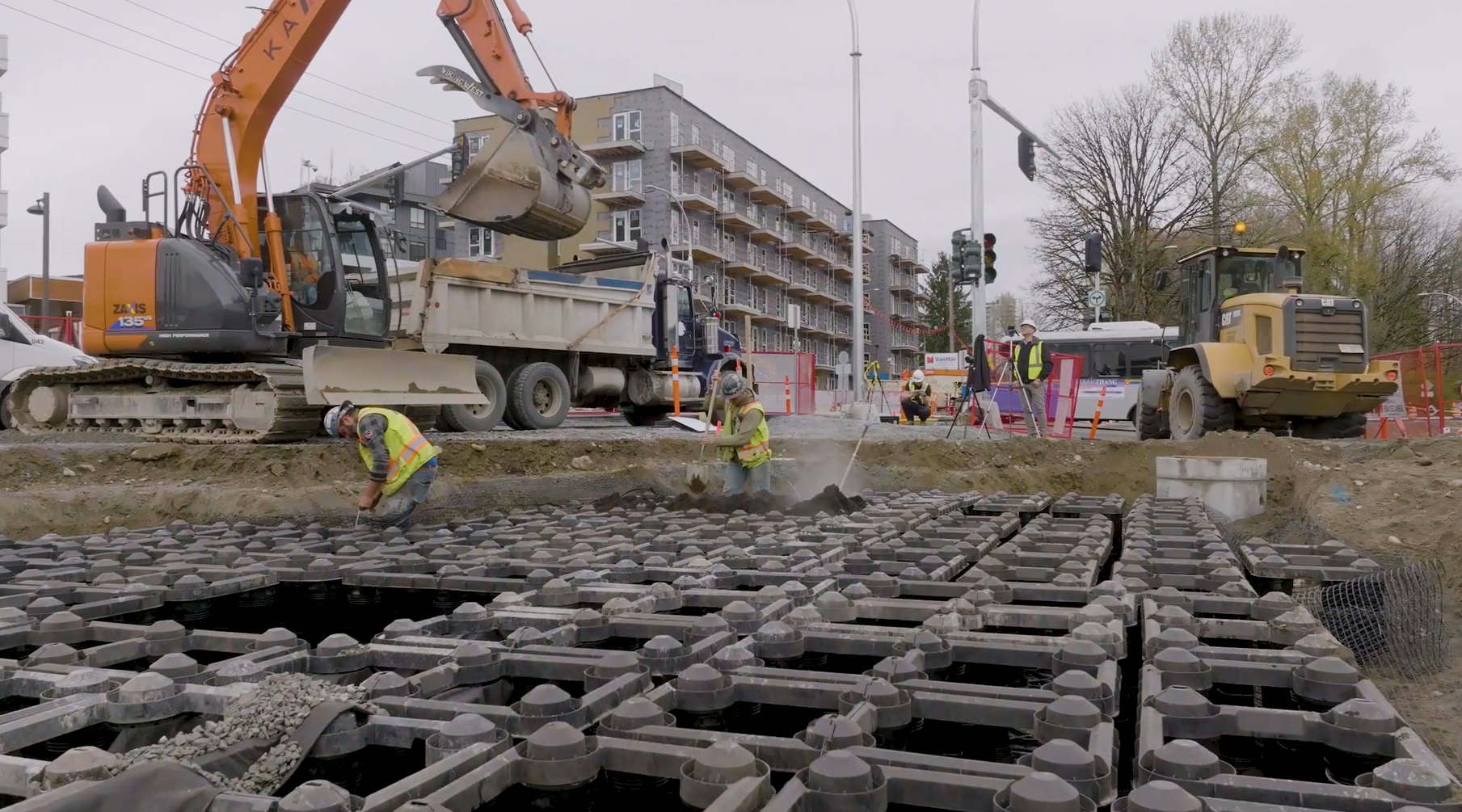
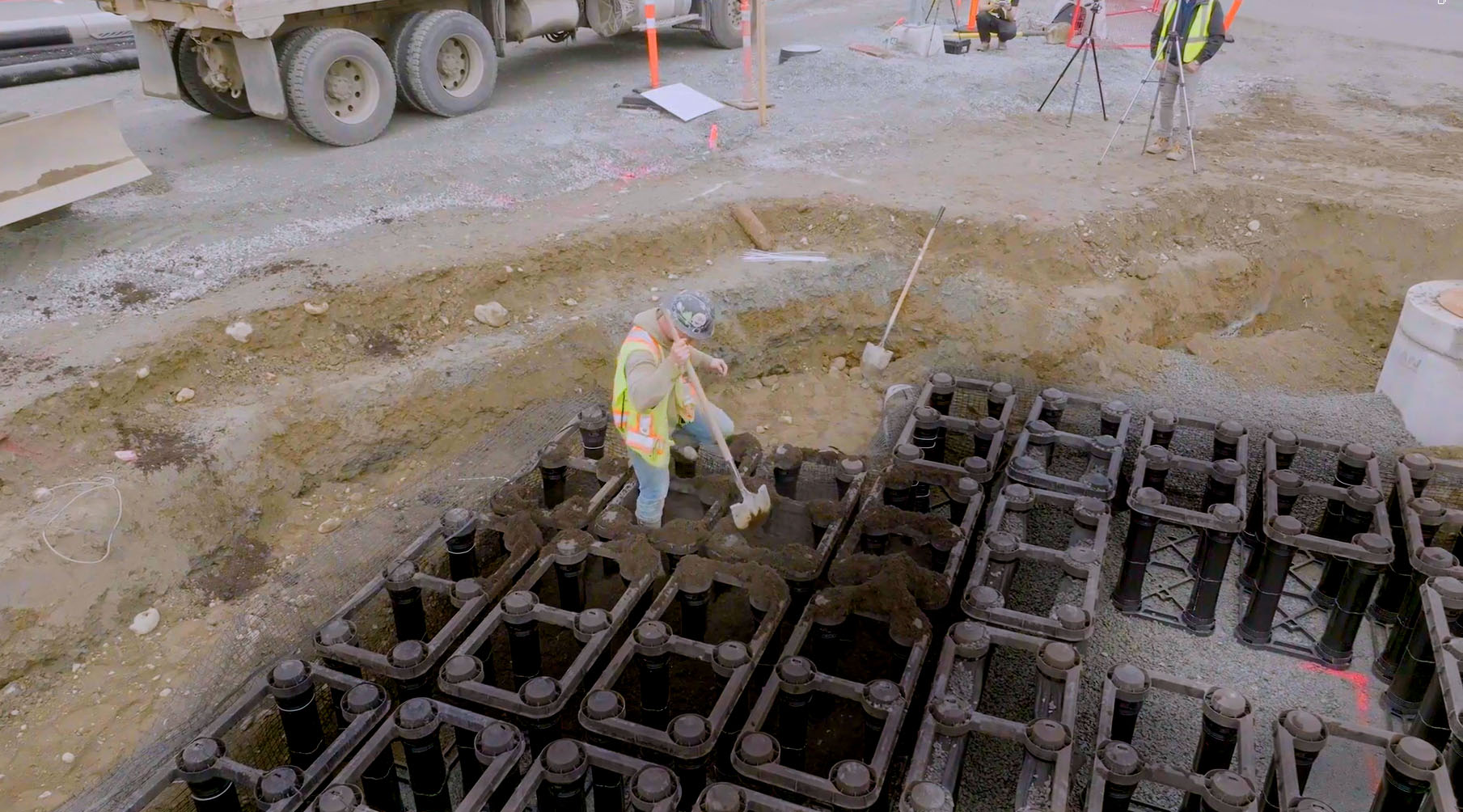
Early project proposals submitted in 2016 by Translink specified raingardens as the preferred stormwater-treatment strategy for the new Phibbs Exchange: “The new Exchange design replaces the primary detention pond with a new stormwater management system that includes raingardens on the passenger platforms. These serve primarily to manage, filter, and clean stormwater, which together with pedestrian scale bridges and landscaping, significantly contributes to an improved user experience and aesthetically pleasing environment.” This method of on-location runoff treatment sought to “meander the water through the site, slowing its flow and maximizing infiltration. The selected landscaping is specific to help reduce the pollutants in the water leaving the site.”
Put another way, green infrastructure solutions were a critical feature of the project from the very beginning; however, bringing the design specs to reality — when faced with the practical functionality of the space — proved a challenge. Safety and accessibility were in jeopardy: The loading zones for passengers getting on and off the buses needed to be larger, as commuters could not be expected to exit the bus and step into a bioswale. Simply stated, not all the raingardens fit.
To maintain their commitment to green features without sacrificing buildable real estate, the project team turned to Silva Cells.
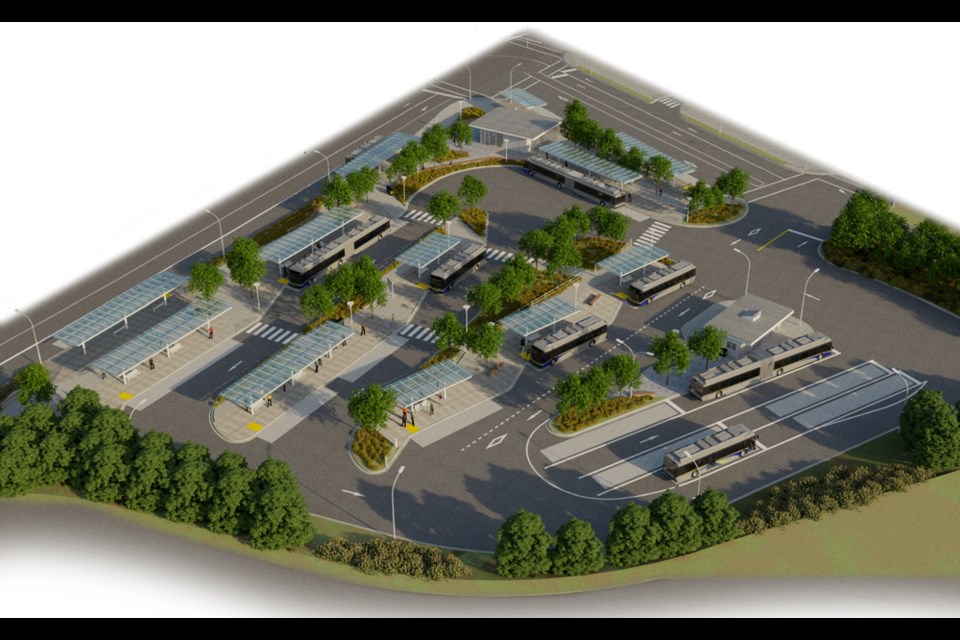
Original site plans called for “daylighted” raingardens, though ultimately there was not enough space to accommodate them — leading to utilization of the Silva Cells. Photo courtesy of NSNews.
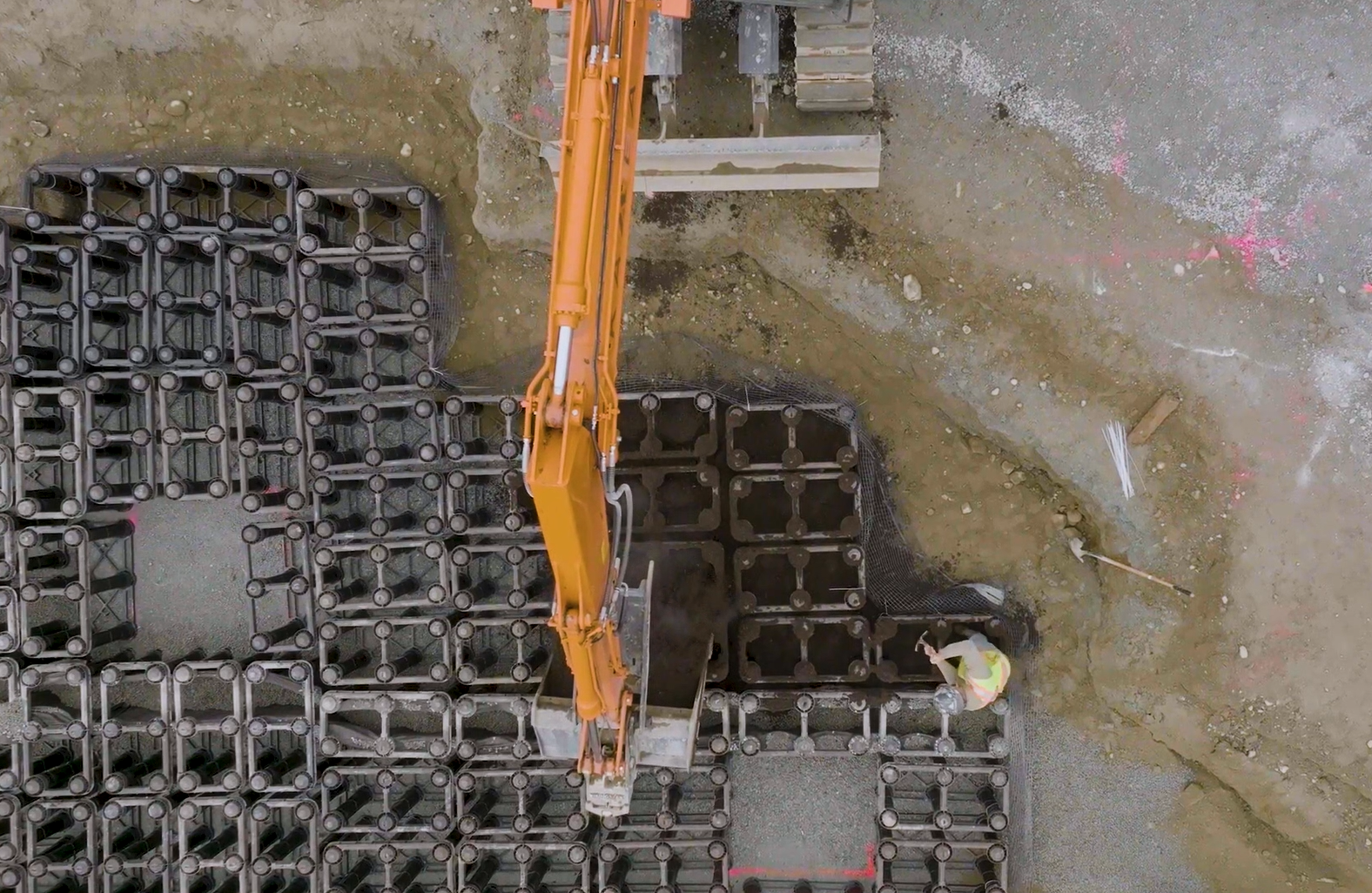
A total of 462 Silva Cells (both 2x and 3x configurations) were installed at the new Phibbs Exchange in the summer and fall of 2023. The system’s primary function was to serve as an LID bioretention tool, slowing and treating stormwater runoff on location. By embracing the Silva Cell strategy, the city achieved its at-source stormwater control objective while simultaneously building large, safe passenger platforms. Silva Cells were also specified for their multifunctionality: in addition to treating stormwater, the system is providing enough lightly compacted soil volume for 17 new trees to grow to healthy maturity: dual-purpose green infrastructure at work.
Silva Cells were a crucial component of the project’s success, according to Nastaran Moradinejad, principal at PFS Studio, who notes the evolution of the Phibbs initiative’s stormwater strategy:
The Phibbs Exchange renewal project targeted an ambitious approach to rainwater management from the start. These targets were originally achieved by the inclusion of sizable rain gardens. As the user capacity and operational needs of the space were further developed, we realized that we did not have access to as much space for these rain gardens as originally anticipated. The rainwater management targets, however, were not abandoned. The use of underground rainwater management infrastructure, such as soil cells, allowed us to achieve these ambitious targets with a much larger paved surface. This infrastructure also allowed us to incorporate adequate soil volume to support large trees within these larger paved areas, providing much needed shade in the face of our more intense climate extremes and heat waves during summer.
The multi-phase installation, which wrapped up in late 2023, also went smoothly, as observed by Eric Hagen at Conwest Construction:
“The installation of the Silva Cells is really easy. DeepRoot was on site to help early on and the process was simple, easy, and efficient, right out of the box. Filling the soil is really easy. There are large openings for the material — filling goes in really easily and then walk-through compaction is not a problem. Utility integration is [also] easy with Silva Cells. The modular system allows you to field-fit the drainage, conduit, and irrigation — it makes life easy.”
City officials and community members are excited about the new Phibbs Exchange, which, according to Federal Minister of Natural Resources Jonathan Wilkinson, “will improve transit in North Vancouver and help more British Columbians get to where they need to go as safely and efficiently as possible.”
For other projects in North Vancouver, check out our case studies here, here, and here.
